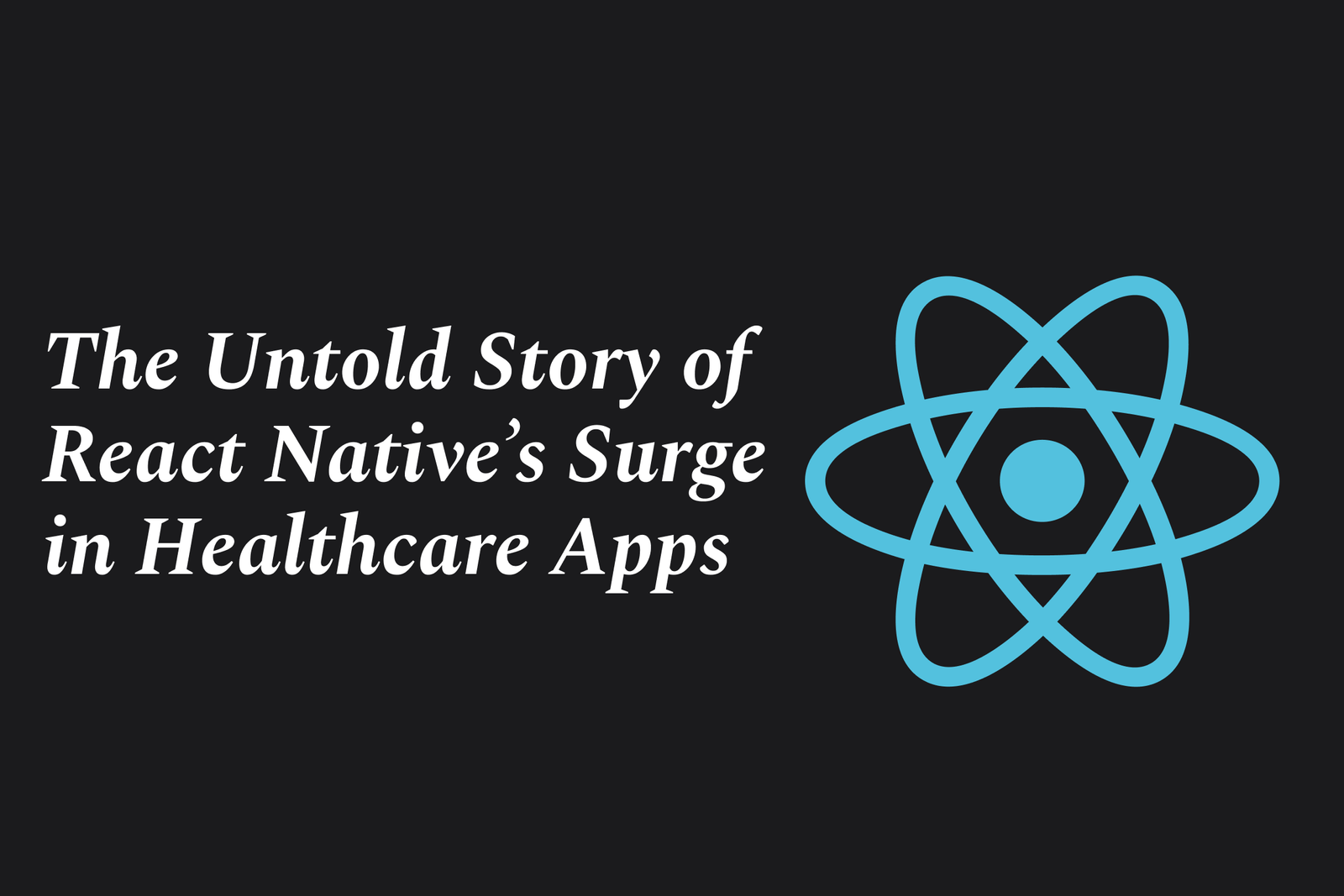The Untold Story Of React Native?S Surge In Healthcare Apps
React Native’s surge in healthcare apps is driven by its ability to build secure, cross-platform solutions quickly and cost-effectively. It enables seamless user experiences, faster updates, and integration with native features, meeting healthcare’s demands for innovation and compliance.
The Untold Story of React Native’s Surge in Healthcare Apps
1 ) Introduction to React Native's Rise in Healthcare
React Native, a popular cross platform mobile development framework, has experienced a significant surge in adoption within the healthcare industry. This growth is driven by the need for rapid development, cost efficiency, and delivering high quality user experiences across multiple devices simultaneously.
2 ) Why Healthcare Apps Prefer React Native
The healthcare sector demands secure, performant, and accessible applications. React Native meets these needs by enabling:
Faster development cycles via reusable codebases for iOS and Android.
Simplified maintenance and updates, critical for compliance and fast iteration.
Integration with native modules to support complex functionalities like real time data processing and device hardware access.
3 ) Benefits for Developers and Healthcare Providers
React Native empowers developers with a streamlined workflow and vast ecosystem, while healthcare providers benefit from:
Quicker time to market for critical health applications.
Enhanced patient engagement through polished, responsive interfaces.
Cost savings by reducing the need for separate native development teams.
4 ) Case Studies Highlighting Successes
Numerous healthcare apps leveraging React Native have seen improved patient outcomes and operational efficiency. Examples include telemedicine platforms, electronic health record (EHR) viewers, and wellness monitoring apps that utilize React Native’s capabilities to deliver secure, user friendly solutions.
5 ) Challenges and Considerations
While React Native offers many advantages, healthcare developers must address challenges such as rigorous security standards, HIPAA compliance, and integration with legacy systems, requiring careful architectural decisions and testing.
6 ) The Future Outlook
The healthcare industry’s adoption of React Native is expected to grow as the framework evolves. Continuous improvements in performance, tooling, and privacy features will further solidify React Native’s position as a preferred choice for healthcare app development.
Summary:
React Native’s ability to deliver fast, efficient, and scalable cross platform applications has propelled its unexpected rise in healthcare app development. It balances developer productivity with the stringent requirements of healthcare, enabling innovative solutions that improve patient care and provider workflows.
https://justacademy.in/news-detail/android-community-app-developer-stories
https://justacademy.in/news-detail/android-ecosystem-growth-statistics
https://justacademy.in/news-detail/android-device-manufacturer-announcements
https://justacademy.in/news-detail/latest-android-camera-app-innovations
https://justacademy.in/news-detail/android-smart-home-integration-updates
Related Posts
Java supports GDPR and data privacy by enabling secure data handling through encryption, controlled access, and precise data management. It allows developers to minimize PII exposure, ensure data confidentiality, and design workflows that comply with data protection regulations effectively.
Java code quality tools have evolved to include advanced static analysis, integrated security checks, and AI-powered code reviews. These updates help developers detect bugs, enforce coding standards, and enhance security, streamlining the development process and improving overall code reliability.
Java remains a cornerstone in big tech companies, evolving with modern features like records, pattern matching, and virtual threads. Its robust ecosystem, enhanced performance, and growing AI integrations keep it vital for both legacy systems and innovative new projects.
Java and CI/CD pipeline optimizations streamline Java application development by automating builds, tests, and deployments. They improve efficiency through parallelization, caching, and secure secrets management, enabling faster feedback loops and more reliable, scalable software delivery.
Java supports modern cryptography standards through its flexible Java Cryptography Architecture (JCA), enabling integration of advanced algorithms like AES, EdDSA, and post-quantum tools. Libraries like Bouncy Castle offer FIPS-certified, hardware-accelerated implementations for secure development.
Java 23 enhances record patterns by enabling concise, direct destructuring of record components within pattern matching, simplifying type checks and data extraction. This improvement boosts code readability and expressiveness by reducing boilerplate in handling immutable data classes.
Java remains a top choice for mobile app backends, powering scalable, secure, and high-performance server-side solutions. Latest trends include cloud-native microservices, reactive programming, and enhanced JVM optimizations, enabling efficient, flexible, and robust mobile backend development.
Java SE 24 and LTS Java SE 21 offer enhanced features and performance, while Apache Spark 4.0.0 introduces Scala 2.13 support and advanced ML and SQL capabilities. Together, they empower developers to build scalable, high-performance data applications with modern tools.
JUnit 5 modernizes Java testing with a modular architecture, improved assertions, and seamless Java 8+ support. Beyond JUnit, tools like Mockito and AssertJ enhance mocking and assertions, creating a powerful, flexible ecosystem for writing clean, efficient Java unit tests.
Java plays a pivotal role in cloud automation tools by providing a robust, platform-independent language used to build scalable automation frameworks like Jenkins and Selenium, enabling efficient CI/CD pipelines, testing, and orchestration across diverse cloud environments.










